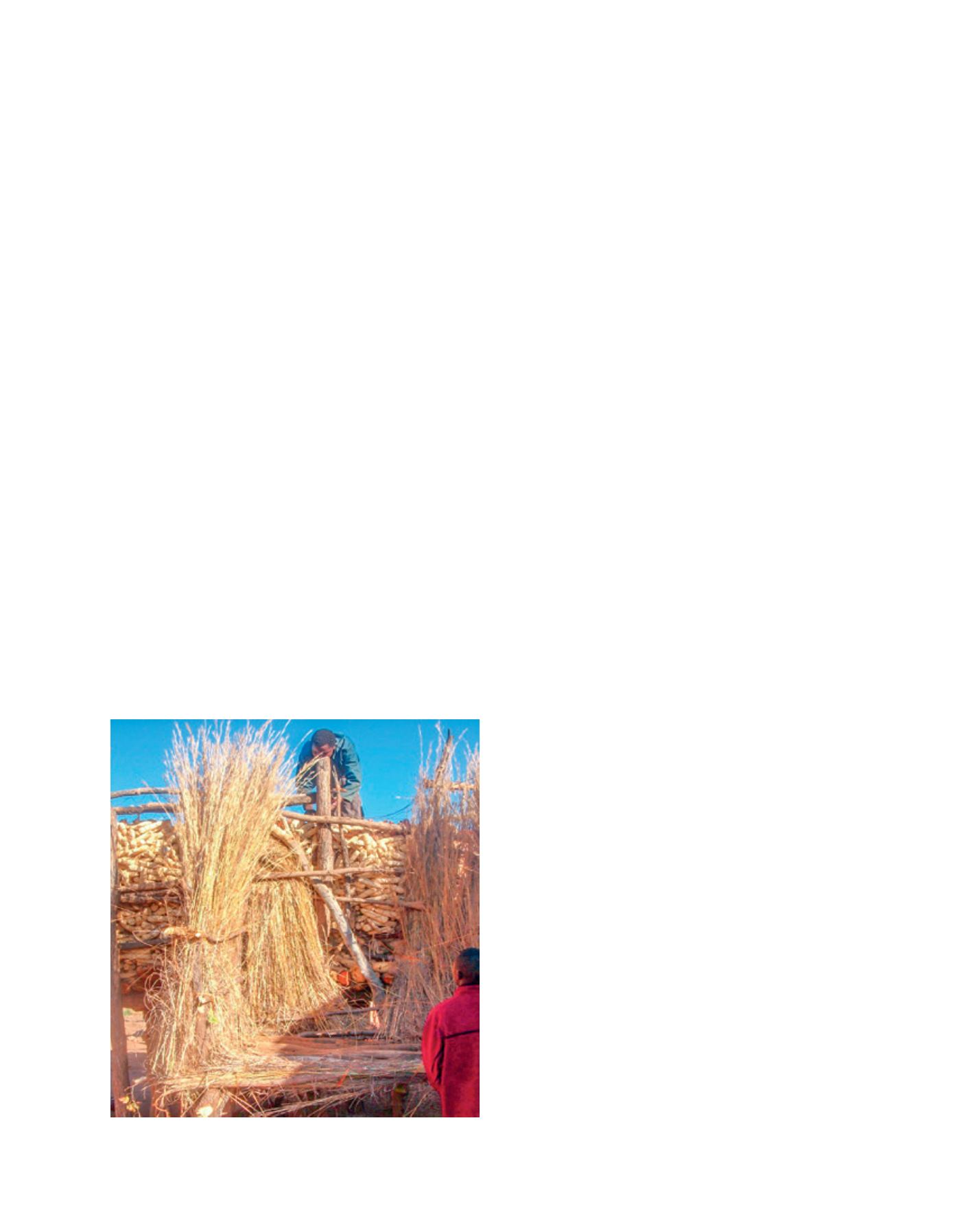

[
] 241
true, because family farming promises to create agricultural
practices that are highly productive, sustainable receptive,
responsive, innovative and dynamic. Given all these features,
family farming may strongly contribute to food security and
food sovereignty. It can also strengthen economic develop-
ment, creating employment and generating income. It offers
large parts of society attractive jobs and may contribute
considerably to the emancipation of downtrodden groups.
Family farming may also consistently contribute to the
maintenance of beautiful landscapes and biodiversity. For
food security to be a reality in the region, access to produc-
tive assets by family farmers should be prioritized. Family
farmer-led agricultural growth strategies must be grounded
within the context of prevailing asset distribution patterns.
Agricultural assets include physical assets (land, water and
labour), production assets (farm buildings, production
equipment and infrastructure), intangible assets or services
(marketing information, extension services), bulk infra-
structure (telecommunication, sewerage and electricity), and
production technology (seeds, plants and animal breeds).
The majority of family farmers in the region have limited
access to these assets; therefore they find it hard to actively
participate in the agricultural economy.
Access to productive assets in the region is driven by past
colonial policies and market forces of agro-industrialization.
Colonization and related oppressive regimes marginalized
indigenous communities’ ethnic minorities from owner-
ship and access of productive assets. The same economic
exclusion policies were also extended to other assets and
services such as water resources, extension and infrastruc-
ture. The dynamic of the agribusiness industry in the past
three decades, also known as agro-industrialization, has
also alienated family farmers in the input markets. These
corporate outfits have commoditized and commercialized
agricultural inputs, putting them out of reach for the major-
ity of the family farmers and smallholder farmers. Water and
land resource are still concentrated among few elite groups
with the majority of the population who are marginalized
from ownership and management of these resources. Many
countries have done little to redistribute these resources;
this is ironic given that most countries got independence
through liberation wars which were premised on redress-
ing skewed ownership of natural resources enacted by past
colonial governments.
Access to input markets and agricultural services such
as extension, bulk infrastructure and technology remains
a challenge for the majority of family farmers in the region.
The input markets in most countries are not well devel-
oped, and are characterized by the dominance of few
foreign multinational firms, poor price transmission, and
high transport costs due to distances between the rural
population and manufacturing sources. The input market
in most countries is also distorted by the dominance of
government and donor subsidy programmes. Extension
services in most countries operate below par with a high
extension-farmer ratio, hence delivery of technical and
marketing advice is compromised.
The region’s governments have been addressing these
issues using the industrial model of agriculture, while in
family farming the peasantry agriculture model is used and
this is called agroecology. Agroecology is very open to tech-
nological innovations but doesn’t over-emphasize them. It
rather puts emphasis on healthy soil, biodiversity and local
knowledge development as a basis for sustainable increases
in production. At the same time, it relates very strongly
to indigenous knowledge systems. Above all, agroecology
provides context-specific solutions rather than a ‘one-size-
fits-all’ approach.
Family farmers by Zimsof, an ESAFF member
ESAFF is sharing an experience of family farmers in Zimbabwe
using the agroecology model of agriculture. The main cause of
food insecurity for many communal households in Zimbabwe
is their reliance upon a form of subsistence-based agriculture
which depends on a limited range of inputs often poorly
suited to local conditions.
Livelihood Insecurity in a Changing Environment: Organic
Conservation Agriculture is an initiative involving 791
resource-poor smallholder family farmers. It was undertaken
in 2011 as a partnership between three organizations: Garden
Africa, Fambidzanai Permaculture Centre and the Zimbabwe
Organic Producers and Promoters Association. Initially an 18
month action research project, it was extended to a further
two years, to end in 2015.
The project was founded on social and market research
which revealed a steadily growing domestic demand for organic
produce. Such demand was being serviced by imports from
South Africa while Zimbabwe’s resource-poor smallholder
farmers remain net recipients of food aid. The initiative therefore
sought to facilitate livelihood opportunities based on market
realities, while applying sound ecological management to restore
ecosystem functions for sustained productivity and growth.
A bumper maize harvest at Shashe after using organic compost
Images: ESAFF
D
eep
R
oots
















